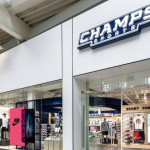During the second quarter of 2007, adidas Group revenues grew 3% on a currency-neutral basis despite a tough comparison with the prior year as a result of high sales related to the 2006 FIFA World Cup. This development was driven by a strong sales increase at brand adidas as well as underlying sales growth in the TaylorMade-adidas Golf segment. Reebok sales, however, declined in the second quarter. Currency movements negatively impacted reported revenues. In euro terms, Group sales decreased by 1.6% to 2.40 billion ($3.2 bn) in the second quarter of 2007 from 2.43 billion ($3.06 bn) in 2006.
Second quarter gross margin increased 280 basis points to 47.4% (2006: 44.6%) as a result of integration-driven cost synergies which positively impacted the cost of sales of both adidas and Reebok and underlying improvements in the Reebok segment. The non-recurrence of negative impacts from purchase price allocation in the Reebok segment also positively impacted gross margin development. Group gross profit increased 5% to 1.14 billion ($1.53 bn) from 1.08 billion ($1.36 bm). As a result of the strong gross margin increase, which more than offset higher operating expenses as a percentage of sales, the Groups operating margin increased 0.7 percentage points to 7.8% in the second quarter of 2007 versus 7.1% in the prior year. Operating profit grew 9% to 188 million ($253.5 mm) versus 173 million ($217.4 mm) in 2006. In the second quarter of 2007, the Groups net income attributable to shareholders increased 27% to 104 million ($140.2 mm) from 82 million ($103.0 mm) last year due to higher operating profit as well as lower net financial expenses and a lower tax rate.
adidas Group currency-neutral sales grow 6% in the first half of 2007
During the first six months of 2007, Group revenues increased 6% on a currency-neutral basis, driven by sales growth in the adidas segment, the inclusion of an additional month in the Reebok segment versus the prior year and underlying sales increases at TaylorMade-adidas Golf. On a reported basis, however, TaylorMade-adidas Golf revenues declined, negatively impacted by the divestiture of the Greg Norman Collection (GNC) wholesale business. From a regional perspective, adidas Group currency-neutral sales grew in all regions except
The adidas segment set the pace for the Groups organic sales growth in the first six months of 2007. Currency-neutral adidas revenues increased 9% in the first half of 2007. Currency-neutral sales in the Reebok segment grew 4% driven by the inclusion of January, which was not consolidated in 2006. On a like-for-like basis, comparing sales for the full six-month periods and excluding the transfer of the NBA and
adidas Group sales grew strongly in all regions except
The gross margin of the adidas Group increased by 2.3 percentage points to 47.1% in the first six months of 2007 (2006: 44.8%), driven by improvements in all segments. This mainly reflects first cost synergies resulting from the integration of adidas and Reebok sourcing activities, which positively affected both segments cost of sales, as well as the non-recurrence of negative impacts from purchase price allocation in the Reebok segment. A higher gross margin at TaylorMade-adidas Golf also contributed to the Groups gross margin increase.
The operating margin of the adidas Group declined 0.2 percentage points to 8.5% in the first half of 2007 (2006: 8.6%). This decrease reflects higher operating expenses as a percentage of sales primarily due to one-time costs associated with the Reebok integration. Increased expenses in the Reebok segment for advertising, product development and initiatives to grow the brand in emerging markets also contributed to this development. The operating expense increase more than offset gross profit improvements. As a result, operating profit for the adidas Group declined 1% in the first six months of 2007 to reach 417 million ($554.4 mm) versus 420 million ($516.5 mm) in 2006.
Net financial expenses increased 1% to 73 million ($97 mm) in the first half of 2007 from 72 million ($89 mm) in the prior year as a result of lower financial income, which was only partly offset by lower financial expenses.
In line with the Groups operating profit decline, income before taxes for the adidas Group decreased 1% to 344 million ($457.3 mm) in the first six months of 2007 from 348 million ($427.9 mm) in 2006.
The Groups net income attributable to shareholders increased 3% to 232 million ($308.4 mm) in the first half of 2007 from 226 million ($277.9 mm) in 2006. The slight decline of the Groups operating profit was more than compensated for by lower minority interests. The Groups minority interests declined by 78% to 2 million ($3 mm) in the first half of 2007 from 8 million ($10 mm) last year due to the buyout of the Groups joint venture partner in
In line with the increase of the Groups net income attributable to shareholders, basic earnings per share also increased 3% to 1.14 ($1.52) in the first six months of 2007 versus 1.11 ($1.36) in 2006. Diluted earnings per share in the first six months of 2007 also increased 3% to 1.09 ($1.45) from 1.06 ($1.30) in the prior year. The dilutive effect mainly results from approximately sixteen million additional potential shares that could be created in relation to the outstanding convertible bond, for which conversion criteria were met for the first time at the end of the fourth quarter of 2004.
Group inventories decreased 2% to 1.72 billion ($2.31 bn) at the end of the first half of 2007 versus 1.75 billion ($2.20 bn) in 2006. On a currency-neutral basis, inventories increased 1%, which is below sales growth expectations for the adidas Group. Group receivables increased 1% (+3% currency-neutral) to 1.69 billion ($2.28 bn) at the end of the first half of 2007 versus 1.68 billion ($2.11 bn) in the prior year. This increase is in line with sales growth during the second quarter of 2007.
Net borrowings at June 30, 2007 were 2.40 billion ($3.23 bn), down 15% versus 2.83 billion ($3.55 bn) in the prior year. Strong bottom-line profitability and continued tight working capital management were the drivers of this reduction.
adidas backlogs grow 9% on a currency-neutral basis
Backlogs for the adidas brand at the end of June 2007 increased 9% versus the prior year on a currency-neutral basis. This improvement highlights the brands strong product pipeline for the second half of the year. First orders for the UEFA EURO 2008 also positively impacted this development. In euro terms, adidas backlogs grew 6%. Footwear backlogs grew 7% in currency-neutral terms (+5% in euros). A modest decline in North America was more than offset by growth in both Asia and
Reebok currency-neutral backlogs stable versus prior year
Backlogs for the Reebok brand at the end of the second quarter of 2007 were stable versus the prior year on a currency-neutral basis. In euro terms, this represents a decline of 3%. Footwear backlogs declined 17% in currency-neutral terms (20% in euros) primarily as a result of lower footwear orders from mall-based retailers in
adidas Group sales in 2007 are expected to grow at a mid-single-digit rate on a currency-neutral basis. Sales at brand adidas are also expected to increase at a mid-single-digit rate on a currency-neutral basis in 2007. Currency-neutral revenues at Reebok are forecasted to improve at a low-single-digit rate compared to the prior year. Currency-neutral TaylorMade-adidas Golf revenues will increase at a mid-single-digit rate on a like-for-like basis. However, due to the divestiture of the GNC wholesale business in November 2006, reported sales for TaylorMade-adidas Golf will decline compared to the prior year. The Group gross margin is expected to be in the range of between 45 and 47%, driven by underlying improvements in all three brand segments and the non-recurrence of purchase price allocation charges following the Reebok acquisition, which negatively impacted the Reebok gross margin in 2006. The Groups operating margin is forecasted to be around 9%, which will be modestly higher than in 2006. Net income attributable to shareholders for the adidas Group is expected to grow at a double-digit rate, approaching 15%.













